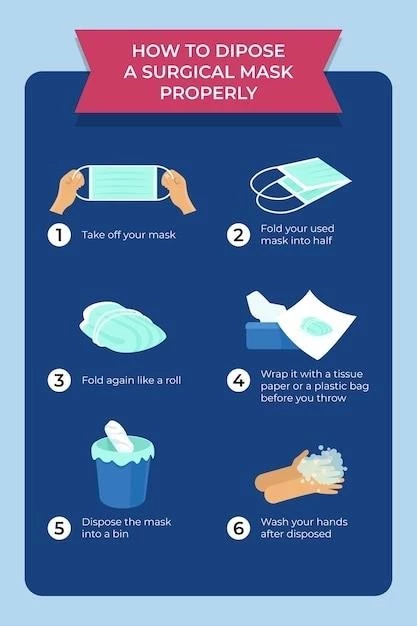Polyethylene Glycol 3350 is commonly used to treat constipation․ It is important to be aware of its common side effects‚ proper usage instructions‚ drug interactions‚ safety precautions‚ and how to manage any side effects that may occur․
Common Side Effects of Polyethylene Glycol 3350
Polyethylene Glycol 3350 is generally safe for most individuals to use for constipation relief‚ but like any medication‚ it can cause side effects․ Common side effects may include bloating‚ gas‚ stomach cramps‚ nausea‚ diarrhea‚ or a feeling of fullness․ These side effects are usually mild and temporary․
If you experience severe or persistent side effects such as allergic reactions (rash‚ itching‚ swelling)‚ severe diarrhea‚ rectal bleeding‚ or worsening of your constipation‚ seek medical attention promptly․ It’s essential to monitor your body’s response to the medication and discuss any concerns with your healthcare provider․
Remember to stay hydrated while using Polyethylene Glycol 3350 to help prevent dehydration‚ especially if diarrhea occurs․ If you have any questions or are unsure about the side effects you are experiencing‚ do not hesitate to contact your healthcare provider for guidance․
Usage Instructions for Polyethylene Glycol 3350
When using Polyethylene Glycol 3350 for constipation relief‚ it’s crucial to follow the instructions provided by your healthcare provider or as indicated on the medication packaging․ Here are some general guidelines for using Polyethylene Glycol 3350⁚
- It is typically taken by mouth‚ usually once a day or as directed․
- The medication is typically mixed with water‚ juice‚ coffee‚ tea‚ or a soft drink before consumption․
- Ensure you measure the correct dosage using the provided measuring device‚ such as a cup or spoon․
- Do not increase the dosage or use it more frequently than recommended unless instructed by your healthcare provider․
- Continue using the medication for the prescribed duration‚ even if your constipation improves․
If you have any questions about how to take Polyethylene Glycol 3350‚ consult your healthcare provider or pharmacist for clarification․ It’s important to use the medication as directed to maximize its effectiveness and minimize the risk of side effects․
Drug Interactions with Polyethylene Glycol 3350
Before using Polyethylene Glycol 3350 for constipation relief‚ it’s crucial to be aware of potential drug interactions that may occur․ Interactions can affect how the medication works or increase the risk of side effects․ Here are some common drug interactions to consider⁚
- Avoid taking Polyethylene Glycol 3350 with other laxatives or stool softeners unless advised by your healthcare provider‚ as it may lead to overuse and potential complications․
- Discuss all prescription‚ over-the-counter medications‚ and supplements you are taking with your healthcare provider to identify any potential interactions․
- Inform your healthcare provider if you are taking medications that can cause fluid and electrolyte imbalances‚ as Polyethylene Glycol 3350 may affect these levels․
- Some medications‚ such as certain antacids or antidiarrheal drugs‚ may interact with Polyethylene Glycol 3350 and reduce its effectiveness․
If you are unsure about possible drug interactions with Polyethylene Glycol 3350‚ consult your healthcare provider or pharmacist for personalized advice․ Your healthcare provider can recommend the best course of action to ensure the safe and effective use of the medication․

Safety Precautions for Using Polyethylene Glycol 3350
While Polyethylene Glycol 3350 is generally safe and effective for treating constipation‚ it is essential to take certain safety precautions to ensure its proper use and minimize any risks․ Here are some safety precautions to consider⁚
- Inform your healthcare provider about any existing medical conditions you have‚ especially if you have kidney problems or gastrointestinal issues․
- Let your healthcare provider know about any allergies you have‚ including allergies to medications or other substances․
- Pregnant or breastfeeding individuals should consult their healthcare provider before using Polyethylene Glycol 3350 to ensure it is safe for them and their baby․
- Do not exceed the recommended dosage of Polyethylene Glycol 3350‚ as this can lead to dehydration or electrolyte imbalances․
- Keep Polyethylene Glycol 3350 out of reach of children to prevent accidental ingestion․
- Store the medication as directed on the packaging‚ away from heat and moisture․
Following these safety precautions can help you use Polyethylene Glycol 3350 safely and effectively․ If you have any concerns about the medication’s safety or its potential impact on your health‚ consult your healthcare provider for personalized guidance․
Managing Side Effects of MiraLAX (Polyethylene Glycol 3350)
While Polyethylene Glycol 3350 is generally well-tolerated‚ some individuals may experience side effects․ If you encounter side effects while using MiraLAX containing Polyethylene Glycol 3350‚ there are ways to manage them effectively․ Here are some strategies to help mitigate common side effects⁚
- Bloating and Gas⁚ Try to incorporate more fiber into your diet gradually․ Physical activity and staying hydrated can also help reduce bloating and gas․
- Stomach Cramps⁚ Ensure you are properly hydrated and try using a heating pad or taking a warm bath to ease stomach cramps․
- Nausea⁚ Take your dose with food or try dividing it into smaller amounts throughout the day․ Ginger or peppermint tea may also alleviate nausea․
- Diarrhea⁚ If diarrhea persists‚ contact your healthcare provider․ Focus on maintaining hydration by drinking water or electrolyte-rich beverages․
- Feeling of Fullness⁚ Eating smaller‚ frequent meals and avoiding heavy or greasy foods can help with the sensation of fullness․
If side effects persist or become severe‚ consult your healthcare provider for further guidance․ It is essential not to ignore persistent or concerning side effects while using Polyethylene Glycol 3350 to manage constipation․ Your healthcare provider can offer personalized advice on managing side effects and adjusting your treatment plan accordingly․
